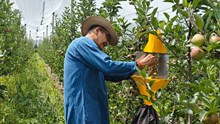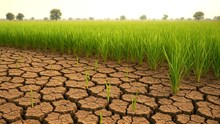
Royal Jelly is a nutrient-rich secretion produced by the hypopharyngeal glands of worker bees in a bee colony. This milky, viscous substance plays a crucial role in the development of queen bees, as it is exclusively fed to queen larvae, contributing to their growth, reproductive abilities, and extended lifespan.
Rich in proteins, vitamins, and bioactive compounds, royal jelly offers numerous health benefits, making it valuable both in the food supplement and cosmetic industries. Although it was once not considered a harvestable product due to its immediate consumption by bees, modern beekeeping techniques now allow for the collection of royal jelly during queen rearing.
Royal Jelly: Production and Harvesting
The preparation of royal jelly is directly connected to the bulk rearing of queen bees. The most popular method of mass queen bee rearing is the grafting method given by Doolittle in 1951. This procedure involves transferring one-day-old larvae into artificial queen cups and putting them in a separate room or a queenless hive. Worker bees then fill the cups with royal jelly.
After 72 hours, the surplus jelly is carefully extracted using an aspirator or water vacuum pump, filtered, and stored in food-grade containers. Due to its limited shelf life, royal jelly is best preserved in deep freezers or transformed into freeze-dried powder for extended use. Beekeepers can harvest this product alongside honey, adding a revenue stream.
Composition and Nutritional Value
Royal jelly is a truly exceptional, nutrient-rich substance secreted by worker bees. It's a rich, creamy liquid mostly composed of water (50–70%), proteins (17–45%), carbohydrates (18–52%), and a minor percentage of lipids (3.5–19%) and minerals (2–3%).
Royal jelly is a natural superfood and is famous for its antibacterial and antibiotic properties. It contains a treasure trove of essential amino acids, B vitamins, and trace minerals. Although it is not a good source of fat-soluble vitamins, A, D, E, or K, its composition generally makes it powerful and health-boosting.
Health Benefits of Royal Jelly
Royal jelly is rich in bioactive compounds, which provide many health benefits. It helps enhance the immune system, promotes healthier skin, and reduces inflammation. Consumed daily in small doses (about 250–500 mg), either as a dietary supplement or mixed with honey, it has become a favorite in the health and wellness world. In Asian markets, royal jelly is particularly popular, with use in the additive of beverages, vitamin supplements, and fruit juices.
Economic Profit and Market Value
In the global market, royal jelly is a highly demanding product. Each 100 grams of royal jelly has a different price. Which is from rs. 6000 to 15000 as per the quality. Freeze-dried royal jelly costs an even higher price because of its longer shelf life and the versatility of this product. A small-scale beekeeper with 15–20 hives can earn a good amount of additional income. One hive can yield 500–700 grams of royal jelly in a year if the conditions are optimal, translating into millions of extra earnings.
In the market, the demand for natural health supplements has increased globally, and royal jelly has great market potential. Its use in medications, cosmetics, and nutraceuticals guarantees consistent consumer demand, which gives farmers the chance to diversify their source of income.
Royal jelly was once a byproduct of bee colonies and has now transformed into a valuable resource through the innovation of modern beekeeping practices. The possibility of improving returns for the producers while addressing rising demand for naturally oriented healthy produce is indeed opening up to many farmers. Its adoption by beekeepers not only brings economically viable but environmentally friendly income-earning options too.
With modern techniques and market trends, this bee-derived treasure will be maximally utilized by farmers to benefit both their pockets and consumers' health across the globe.
















